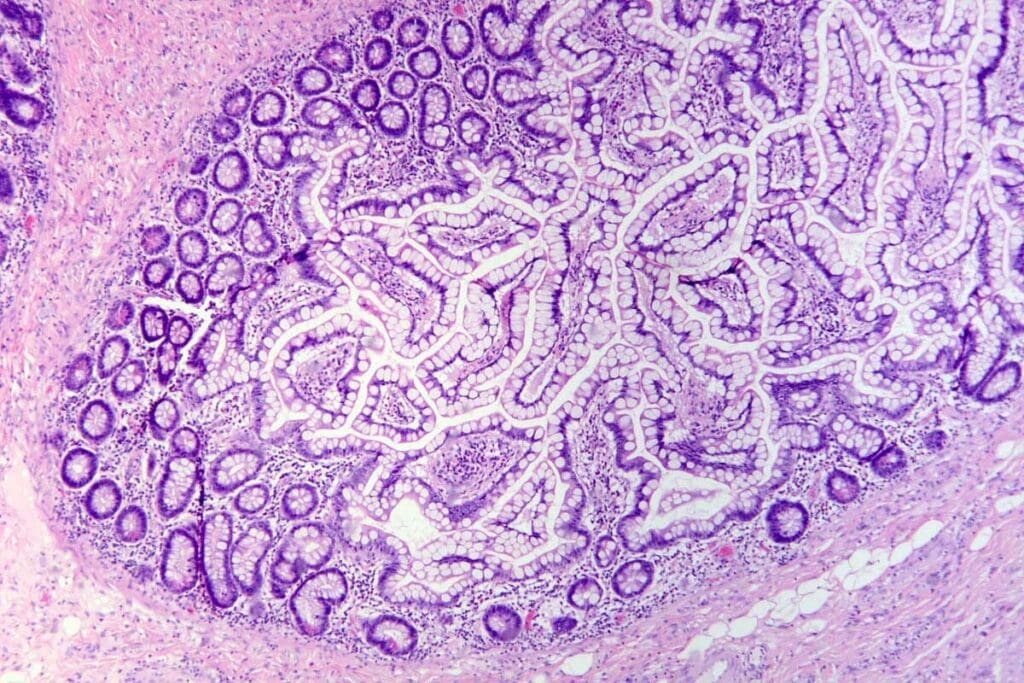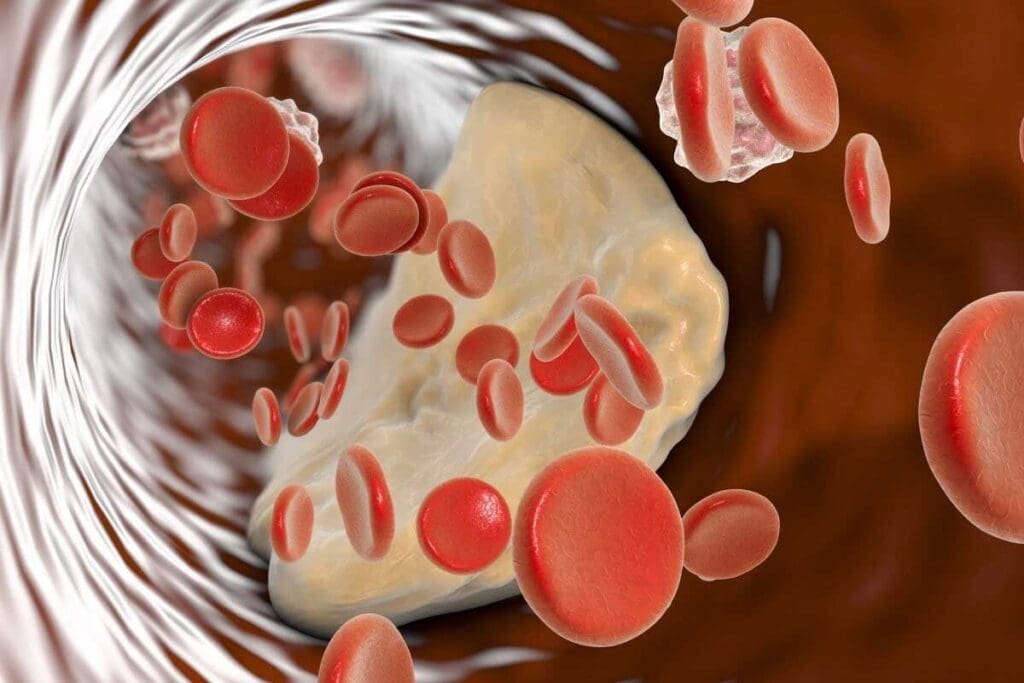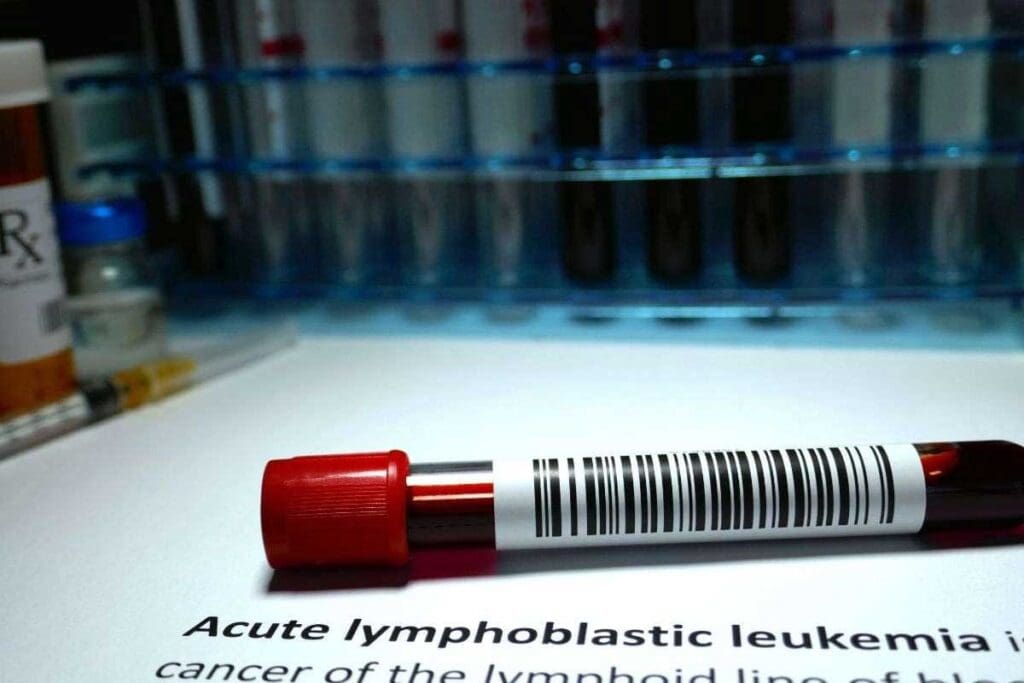Last Updated on November 20, 2025 by Ugurkan Demir

Acute Lymphoblastic Leukemia (ALL) is a blood cancer. It happens when the bone marrow makes too many immature lymphoblasts. Getting diagnosed with ALL can be scary, but Liv Hospital is here to help.
ALL can happen to anyone, kids and adults alike. Knowing what causes it and who’s at risk helps catch it early. Our team at Liv Hospital is all about top-notch care and support for you.

Patients and doctors need to understand Acute Lymphoblastic Leukemia (ALL). This cancer affects the blood and bone marrow. It’s caused by the fast growth of immature lymphocytes, called lymphoblasts.
ALL is a fast-growing cancer that starts in the bone marrow. It quickly spreads to the blood and can reach other parts of the body. This includes the lymph nodes, spleen, liver, and the central nervous system.
ALL is divided into B-cell and T-cell types based on the lymphocytes affected. The type of ALL helps doctors predict the outcome and plan treatment.
B-cell ALL is common in kids, while T-cell ALL is more common in adults. The World Health Organization (WHO) classifies ALL into subtypes based on genetic and molecular features.
ALL fills the bone marrow with cancerous lymphoblasts. This blocks the production of normal blood cells. This leads to anemia, infections, and bleeding problems.
Lymphoblasts in the bone marrow and blood are a key sign of ALL. As the disease gets worse, these cells can damage organs and make them less functional. Knowing how ALL affects the bone marrow and blood is key to finding effective treatments.
ALL has a big impact on patients and their families. It affects them physically and emotionally. So, it’s vital to provide full care and support.

Learning about Acute Lymphoblastic Leukemia (ALL) is key to finding better ways to prevent and treat it. The exact cause is not known, but research has found several risk factors and how the disease starts.
Genetic changes are important in making lymphoblasts, which can turn cancerous in ALL. These changes affect genes that control cell growth, division, and survival. This leads to lymphoblasts growing out of control.
Specific genetic problems, like chromosomal changes or mutations in TP53 or IKZF1 genes, raise the risk of getting ALL.
ALL’s development is complex, involving genetics, environment, and other factors. High radiation, some chemicals, and older parents at birth are risk factors.
Understanding these factors and how they work together is key to knowing why ALL happens.
| Risk Factor | Description |
| Genetic Mutations | Mutations in genes regulating cell growth and survival, such as TP53 or IKZF1 |
| Radiation Exposure | High levels of ionizing radiation |
| Chemical Exposure | Exposure to certain chemicals and toxins |
| Parental Age | Older age at childbirth |
By knowing how genetics, environment, and other factors interact, we can better understand ALL. This helps us find better ways to diagnose and treat it.
Understanding the genetic risk factors for Acute Lymphoblastic Leukemia (ALL) is key. These factors help identify who is at higher risk. They also play a big role in how the disease develops and how it’s treated.
Certain inherited genetic syndromes raise the risk of getting ALL. For example, Down syndrome greatly increases the risk of ALL in kids. Kids with Down syndrome are 20-30 times more likely to get ALL than others.
Other genetic syndromes, like Fanconi anemia and ataxia-telangiectasia, also increase the risk.
Chromosomal abnormalities are also a big risk factor for ALL. The Philadelphia chromosome, caused by a swap between chromosomes 9 and 22, is often seen in ALL, mainly in adults. Other changes, like hyperdiploidy and hypodiploidy, also affect the risk and how well ALL can be treated.
It’s important to know about the environmental risks for Acute Lymphoblastic Leukemia (ALL). These risks can help prevent and catch the disease early. Things in our environment can greatly affect our chance of getting ALL.
High levels of radiation can increase the risk of ALL. This includes exposure from nuclear accidents, some medical procedures, and jobs that involve radiation. Ionizing radiation can damage DNA, which might lead to leukemia.
People who were exposed to a lot of radiation, like in nuclear accidents, have a higher risk of getting ALL. Also, medical procedures that use radiation can raise this risk.
Some chemicals and toxins can also raise the risk of ALL. Benzene, found in gasoline and used in many industrial processes, is a known risk. Other chemicals and toxins, like pesticides and certain industrial solvents, may also increase the risk.
Jobs that involve these chemicals, like those that use benzene and other harmful substances, can increase the risk of ALL. It’s key for workers in these jobs to follow safety rules. Also, it’s important for rules to be strict about how much of these substances people can be exposed to.
Many factors can increase the risk of getting Acute Lymphoblastic Leukemia (ALL). These include age, gender, ethnicity, and family background. For example, the age at which parents have children can also play a role.
Age is a big factor in getting ALL. It’s most common in kids under 5 and adults over 50. This shows that different things might cause it in different age groups.
ALL Incidence by Age Group
| Age Group | Incidence Rate |
| 0-4 years | High |
| 5-19 years | Moderate |
| 20-49 years | Low |
| 50+ years | High |
Studies show that gender and ethnicity can affect who gets ALL. Males are a bit more likely to get it than females. Also, different ethnic groups have different rates of getting ALL.
Research links parental age at childbirth to a higher risk of ALL in kids. Advanced paternal age is a particular concern.
Knowing about these risk factors helps us find who might be at higher risk. It can lead to early detection and prevention efforts.
Acute Lymphoblastic Leukemia (ALL) is a big worry in kids’ health. Knowing what increases the risk is key to catching it early. We’ll look at why ALL is more common in kids and how prenatal and early life factors play a part.
ALL is the most common leukemia in kids, making up a big part of childhood cancer cases. Most cases happen between 2 and 5 years old, mostly in rich countries. Several things make kids more likely to get it, like:
Studies say fast-growing lymphoblasts and genetic changes in kids might lead to ALL. Knowing these can help spot at-risk kids early and start treatments sooner.
Prenatal and early life factors can raise the risk of ALL in kids. Some possible risks include:
Research also links maternal diet and lifestyle in pregnancy to ALL risk. A diet missing key nutrients or exposure to toxins can increase the risk.
We’re learning more about how early life factors affect ALL risk in kids. More research is needed to grasp these complex links and find ways to prevent ALL.
Acute Lymphoblastic Leukemia (ALL) is more common in children, but adults can also get it, mainly as they get older. It’s important to know the special risks for ALL adults to catch it early and treat it well.
As we get older, the chance of getting ALL goes up a lot after 50. This is a big reason why doctors look for ALL in adults and how they treat it.
ALL in adults gets more common after 50, making age a big risk factor. This rise isn’t just because of age. Other things, ike environmental toxins and genetic changes, also play a part.
Key age-related factors include:
Some jobs and lifestyles can also raise the risk of ALL in adults. Being around certain chemicals, radiation, and workplace dangers can increase the risk.
Occupational exposures of concern include:
Smoking and diet can also affect the risk of ALL, but we need more research to understand how.
Knowing these special risks helps us spot adults at higher risk for ALL. This can lead to better results by catching it early and using the right treatments.
Certain viral infections are now understood to play a role in the pathogenesis of ALL. The exact mechanisms by which viruses contribute to the development of this leukemia are complex and multifactorial. We will examine the known viral associations and discuss the mechanisms of virus-induced leukemogenesis, providing insights into this complex process.
Several viral infections have been linked to the development of ALL. One of the most well-studied associations is with the human T-cell lymphoma/leukemia virus-1 (HTLV-1). HTLV-1 is known to cause adult T-cell leukemia/lymphoma, a distinct clinical entity from ALL, but it highlights the potential for viral infections to lead to lymphoproliferative disorders. Research has also explored the role of other viruses, such as Epstein-Barr virus (EBV), in the pathogenesis of various lymphomas and leukemias.
Studies have shown that viral infections can lead to genetic mutations and alterations in cellular behavior that may predispose to leukemogenesis.
Mechanisms of Virus-Induced Leukemogenesis
The mechanisms by which viral infections contribute to the development of ALL are not fully understood but are believed to involve several key processes. Viruses can integrate into the host genome, leading to disruption of normal cellular regulatory mechanisms. They can also induce chronic inflammation and oxidative stress, which may result in genetic damage over time.
To better understand the relationship between viral infections and ALL, let’s examine some key data:
| Virus | Association with ALL | Mechanism |
| HTLV-1 | Strong association with adult T-cell leukemia/lymphoma | Integration into the host genome, disruption of cellular regulation |
| EBV | Linked to various lymphomas and leukemias | Immortalization of B cells, chronic inflammation |
Viral infections represent a significant area of research in understanding the causes of ALL. Further studies are needed to elucidate the precise mechanisms by which viruses contribute to leukemogenesis and to explore potential therapeutic strategies targeting virus-associated ALL.
Early detection is key in fighting Acute Lymphoblastic Leukemia (ALL). We’ll look at why early detection matters. We’ll also talk about new ways to find ALL, like screening in groups at high risk.
Screening those at high risk is a big step in catching ALL early. People with a family history of leukemia or certain genetic conditions are at higher risk. Regular check-ups and screenings can spot ALL early, which can lead to better treatment results.
We suggest regular monitoring for those with risk factors. This might include blood tests and bone marrow checks to catch problems early.
| Risk Factor | Screening Recommendation |
| Family history of leukemia | Annual blood tests |
| Genetic syndromes (e.g., Down syndrome) | Bi-annual bone marrow examination |
| Previous radiation exposure | Regular blood tests every 6 months |
Today’s diagnostic tools have made finding ALL more accurate. Genetic testing is key in spotting specific genetic changes linked to ALL.
We use advanced tools, including:
These modern methods help us give accurate diagnoses and tailor treatments. Early detection through these means can greatly improve patient results.
Understanding Acute Lymphoblastic Leukemia (ALL) is key to preventing, diagnosing, and treating it. We’ve looked into what ALL is, its risk factors, and how it’s diagnosed. At Liv Hospital, we aim to give top-notch healthcare and support to international patients with ALL.
The cause of ALL is not fully known, but research has found some risk factors. Things like benzene, radiation, and past treatments can lead to ALL. Also, some genetic changes can raise the risk of getting ALL.
Knowing more about ALL helps us spot risks early and act fast. Our team at Liv Hospital is all about giving personalized care and support. We work hard to help patients with ALL get the best results.
Acute Lymphoblastic Leukemia (ALL) is a blood cancer. It happens when the body makes too many immature lymphoblasts. This can affect both kids and adults.
ALL is caused by many things. This includes genetic changes and exposure to radiation and chemicals.
Some people are more likely to get ALL. This includes those with a family history of leukemia, certain genetic syndromes, and those exposed to harmful substances.
ALL is more common in kids. But adults can also get it, mostly after 50.
Kids at risk for ALL include those exposed to harmful things before birth or early in life. Certain genetic syndromes also increase the risk.
Yes, some viral infections can raise the risk of getting ALL. Viruses can play a role in causing leukemia.
Doctors use blood tests and bone marrow biopsies to diagnose ALL. These tests help find the disease accurately.
Finding ALL early is key to treating it well. Screening people at high risk can catch the disease early.
Being exposed to radiation and certain chemicals can increase the risk of ALL.
The risk of ALL goes up with age, more so after 50. Age-related factors can also play a role in getting the disease.
Yes, some lifestyle and work-related factors can raise the risk of ALL, mainly in adults.
Subscribe to our e-newsletter to stay informed about the latest innovations in the world of health and exclusive offers!